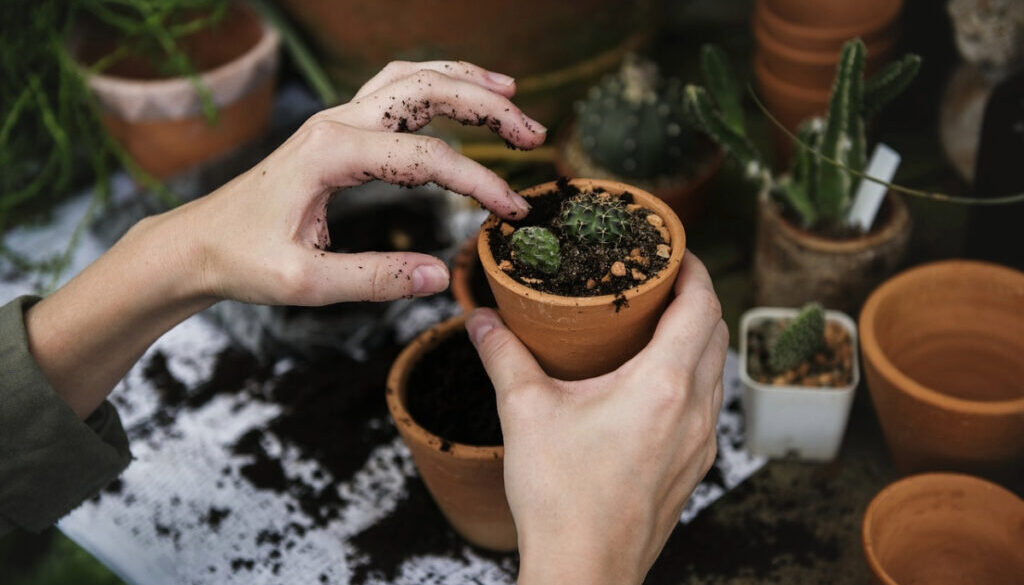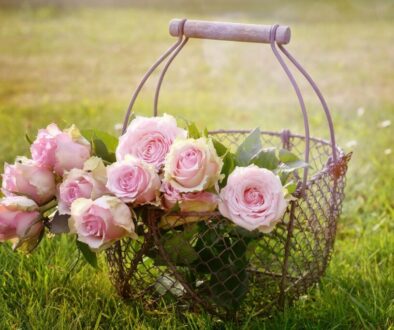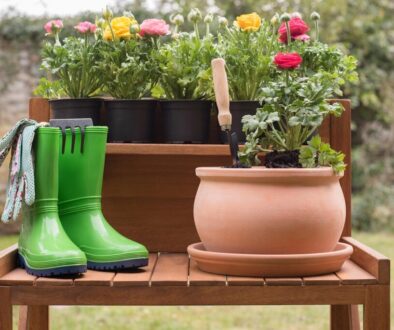How to Create the Perfect Soil Mix for Container Gardening: A Comprehensive Guide
Container gardening is a fantastic way to grow plants, whether you’re limited on space, dealing with poor soil, or want to add a touch of greenery to your patio, balcony, or windowsill. However, the success of your container garden largely depends on one crucial factor: the soil mix. Unlike traditional garden beds, container plants rely entirely on the soil you provide for nutrients, water, and root support.
In this blog post, we’ll dive deep into how to create the perfect soil mix for container gardening. We’ll cover the science behind soil composition, the key ingredients you need, and step-by-step instructions to craft a mix that will help your plants thrive. Whether you’re a beginner or a seasoned gardener, this guide will equip you with the knowledge to grow lush, healthy plants in containers.
Why Soil Matters in Container Gardening
Before we get into the nitty-gritty of creating the perfect soil mix, it’s important to understand why soil is so critical in container gardening.
- Limited Space, Limited Resources: In a container, plants have a finite amount of space to grow. The soil must provide all the nutrients, water, and oxygen the plant needs to survive and thrive.
- Drainage and Aeration: Poor drainage can lead to root rot, while inadequate aeration can suffocate roots. The right soil mix ensures that water flows through the container while retaining enough moisture for the plant.
- Nutrient Availability: Unlike garden beds, where plants can draw nutrients from the surrounding soil, container plants depend entirely on the soil mix you provide. A well-balanced mix ensures your plants get the nutrients they need.
- Weight and Stability: Containers can tip over if the soil is too light or too dense. The perfect soil mix strikes a balance between being lightweight and providing enough stability for the plant.
Key Ingredients for the Perfect Soil Mix
Creating the perfect soil mix for container gardening is like baking a cake—you need the right ingredients in the right proportions. Here are the essential components:
1. Base Material (Potting Soil)
The base of your mix should be a high-quality potting soil. Avoid using garden soil, as it’s too dense and may contain pests or diseases. Potting soil is specifically designed for containers and is usually a blend of peat moss, compost, and perlite or vermiculite.
2. Organic Matter (Compost)
Compost is the lifeblood of your soil mix. It adds nutrients, improves soil structure, and enhances microbial activity. You can use homemade compost or purchase it from a garden center. Well-rotted compost is best, as it’s rich in nutrients and free of pathogens.
3. Aeration Agents (Perlite or Vermiculite)
Aeration is crucial for healthy root growth. Perlite and vermiculite are lightweight, porous materials that improve drainage and prevent soil compaction. Perlite is better for drainage, while vermiculite retains more moisture.
4. Water Retention (Coconut Coir or Peat Moss)
Coconut coir and peat moss help the soil retain moisture, which is especially important in containers that dry out quickly. Coconut coir is a sustainable alternative to peat moss and has a neutral pH, making it suitable for most plants.
5. Nutrient Boosters (Worm Castings or Fertilizers)
While compost provides some nutrients, adding worm castings or a slow-release fertilizer ensures your plants have a steady supply of essential nutrients. Worm castings are rich in micronutrients and improve soil structure.
6. pH Adjusters (Lime or Sulfur)
Most plants prefer a slightly acidic to neutral pH (6.0–7.0). If your soil mix is too acidic or alkaline, you can adjust it using lime (to raise pH) or sulfur (to lower pH).
Step-by-Step Guide to Creating the Perfect Soil Mix
Now that you know the key ingredients, let’s walk through the process of creating the perfect soil mix for your container garden.
Step 1: Choose Your Base
Start with a high-quality potting soil. Look for a mix that’s lightweight and free of large chunks or debris. If you’re making your base, combine equal parts peat moss or coconut coir, compost, and perlite or vermiculite.
Step 2: Add Organic Matter
Mix in 1–2 parts of well-rotted compost. This will provide a rich source of nutrients and improve soil structure. If you don’t have compost, you can use store-bought organic compost.
Step 3: Improve Aeration
Add 1 part perlite or vermiculite to the mix. This will ensure proper drainage and prevent the soil from becoming compacted over time.
Step 4: Enhance Water Retention
Incorporate 1 part of coconut coir or peat moss to help the soil retain moisture. This is especially important for plants that require consistent moisture levels.
Step 5: Boost Nutrients
Add ½–1 part worm castings or a slow-release fertilizer to the mix. This will provide a steady supply of nutrients as your plants grow.
Step 6: Adjust pH (If Necessary)
Test the pH of your soil mix using a pH testing kit. Most plants prefer a pH between 6.0 and 7.0. If the pH is too low (acidic), add lime to raise it. If it’s too high (alkaline), add sulfur to lower it.
Step 7: Mix Thoroughly
Combine all the ingredients in a large container or wheelbarrow. Use a shovel or your hands to mix everything thoroughly. The goal is to create a uniform blend that’s light, fluffy, and well-aerated.
Tailoring Your Soil Mix to Specific Plants
While the above mix works well for most plants, some have specific soil requirements. Here’s how to customize your soil mix for different types of plants:
1. Succulents and Cacti
These plants need excellent drainage and prefer a sandy, gritty mix. Use 2 parts potting soil, 1 part coarse sand, and 1 part perlite or pumice.
2. Vegetables and Herbs
Vegetables and herbs thrive in nutrient-rich soil. Use 2 parts potting soil, 1 part compost, 1 part coconut coir, and ½ part worm castings.
3. Flowering Plants
Flowering plants benefit from a mix that retains moisture while providing good drainage. Use 2 parts potting soil, 1 part compost, 1 part perlite, and 1 part coconut coir.
4. Acid-Loving Plants (e.g., Blueberries, Azaleas)
These plants prefer acidic soil. Use 2 parts peat moss, 1 part compost, and 1 part perlite. You can also add pine bark to increase acidity.
Tips for Maintaining Your Soil Mix
Creating the perfect soil mix is just the first step. To keep your container plants healthy, follow these maintenance tips:
- Refresh the Soil Annually: Over time, soil in containers can become compacted and depleted of nutrients. Refresh the soil mix each growing season by replacing the top few inches or repotting the plant entirely.
- Monitor Moisture Levels: Containers dry out faster than garden beds. Check the soil regularly and water as needed. Mulching the surface can help retain moisture.
- Fertilize Regularly: Even the best soil mix will eventually run out of nutrients. Use a balanced liquid fertilizer or slow-release granules to keep your plants fed.
- Watch for Pests and Diseases: Container plants can still be affected by pests and diseases. Inspect your plants regularly and treat any issues promptly.
Common Mistakes to Avoid
Even with the best intentions, it’s easy to make mistakes when creating a soil mix for container gardening. Here are some common pitfalls to avoid:
- Using Garden Soil: Garden soil is too dense for containers and can lead to poor drainage and root rot. Always use a potting mix designed for containers.
- Overloading with Fertilizer: Too much fertilizer can burn plant roots and disrupt soil chemistry. Follow the recommended dosage and avoid over-fertilizing.
- Ignoring pH Levels: Soil pH affects nutrient availability. Test your soil mix and adjust the pH as needed to suit your plants.
- Skipping Aeration: Without proper aeration, roots can suffocate and die. Always include perlite, vermiculite, or another aeration agent in your mix.
Conclusion
Creating the perfect soil mix for container gardening is both an art and a science. By understanding the needs of your plants and using the right ingredients, you can craft a soil mix that promotes healthy growth, vibrant blooms, and bountiful harvests. Whether you’re growing succulents, vegetables, or flowers, a well-balanced soil mix is the foundation of a thriving container garden.
So, roll up your sleeves, gather your ingredients, and start mixing! Your plants will thank you with lush foliage, stunning flowers, and delicious produce.
Happy Gardening!













